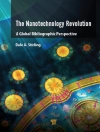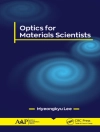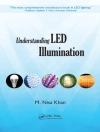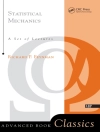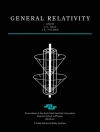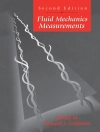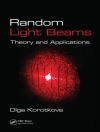This long-awaited revised second edition of the standard reference on the subject has been considerably expanded to include such recent developments as novel control schemes, control of chaotic space-time patterns, control of noisy nonlinear systems, and communication with chaos, as well as promising new directions in research. The contributions from leading international scientists active in the field provide a comprehensive overview of our current level of knowledge on chaos control and its applications in physics, chemistry, biology, medicine, and engineering. In addition, they show the overlap with the traditional field of control theory in the engineering community.
An interdisciplinary approach of interest to scientists and engineers working in a number of areas.
İçerik tablosu
Preface xxi
List of Contributors xxiii
Part I Basic Aspects and Extension of Methods
1 Controlling Chaos 3
Elbert E. N. Macau and Celso Grebogi
1.1 Introduction 3
1.2 The OGY Chaos Control 6
1.3 Targeting–Steering Chaotic Trajectories 8
1.3.1 Part I: Finding a Proper Trajectory 9
1.3.2 Part II: Finding a Pseudo-Orbit Trajectory 10
1.3.3 The Targeting Algorithm 12
1.4 Applying Control of Chaos and Targeting Ideas 13
1.4.1 Controlling an Electronic Circuit 13
1.4.2 Controlling a Complex System 19
1.5 Conclusion 26
References 26
2 Time-Delay Control for Discrete Maps 29
Joshua E. S. Socolar
2.1 Overview: Why Study Discrete Maps? 29
2.2 Theme and Variations 31
2.2.1 Rudimentary Time-Delay Feedback 32
2.2.2 Extending the Domain of Control 34
2.2.3 High-Dimensional Systems 37
2.3 Robustness of Time-Delay Stabilization 41
2.4 Summary 44
Acknowledgments 44
References 44
3 An Analytical Treatment of the Delayed Feedback Control Algorithm 47
Kestutis Pyragas, Tatjana Pyragienė, and Viktoras Pyragas
3.1 Introduction 47
3.2 Proportional Versus Delayed Feedback 50
3.3 Controlling Periodic Orbits Arising from a Period Doubling Bifurcation 53
3.3.1 Example: Controlling the Rössler System 54
3.4 Control of Forced Self-Sustained Oscillations 57
3.4.1 Problem Formulation and Averaged Equation 57
3.4.2 Periodic Orbits of the Free System 58
3.4.3 Linear Stability of the System Controlled by Delayed Feedback 60
3.4.4 Numerical Demonstrations 63
3.5 Controlling Torsion-Free Periodic Orbits 63
3.5.1 Example: Controlling the Lorenz System at a Subcritical Hopf Bifurcation 65
3.6 Conclusions 68
References 70
4 Beyond the Odd-Number Limitation of Time-Delayed Feedback Control 73
Bernold Fiedler, Valentin Flunkert, Marc Georgi, Philipp Hövel, and Eckehard Schöll
4.1 Introduction 73
4.2 Mechanism of Stabilization 74
4.3 Conditions on the Feedback Gain 78
4.4 Conclusion 82
Acknowledgments 82
Appendix: Calculation of Floquet Exponents 82
References 83
5 On Global Properties of Time-Delayed Feedback Control 85
Wolfram Just
5.1 Introduction 85
5.2 A Comment on Control and Root Finding Algorithms 88
5.3 Codimension-Two Bifurcations and Basins of Attraction 91
5.3.1 The Transition from Super- to Subcritical Behavior 91
5.3.2 Probing Basins of Attraction in Experiments 93
5.4 A Case Study of Global Features for Time-Delayed Feedback Control 94
5.4.1 Analytical Bifurcation Analysis of One-Dimensional Maps 95
5.4.2 Dependence of Sub- and Supercritical Behavior on the Observable 98
5.4.3 Influence of the Coupling of the Control Force 99
5.5 Conclusion 101
Acknowledgments 102
Appendix A. Normal Form Reduction 103
Appendix B. Super- and Subcritical Hopf Bifurcation for Maps 106
References 106
6 Poincaré-Based Control of Delayed Measured Systems: Limitations and Improved Control 109
Jens Christian Claussen
6.1 Introduction 109
6.1.1 The Delay Problem–Time-Discrete Case 109
6.1.2 Experimental Setups with Delay 111
6.2 Ott-Grebogi-Yorke (OGY) Control 112
6.3 Limitations of Unmodified Control and Simple Improved Control Schemes 113
6.3.1 Limitations of Unmodified OGY Control in the Presence of Delay 113
6.3.2 Stability Diagrams Derived by the Jury Criterion 116
6.3.3 Stabilizing Unknown Fixed Points: Limitations of Unmodified Difference Control 116
6.3.4 Rhythmic Control Schemes: Rhythmic OGY Control 119
6.3.5 Rhythmic Difference Control 120
6.3.6 A Simple Memory Control Scheme: Using State Space Memory 122
6.4 Optimal Improved Control Schemes 123
6.4.1 Linear Predictive Logging Control (LPLC) 123
6.4.2 Nonlinear Predictive Logging Control 124
6.4.3 Stabilization of Unknown Fixed Points: Memory Difference Control (mdc) 125
6.5 Summary 126
References 127
7 Nonlinear and Adaptive Control of Chaos 129
Alexander Fradkov and Alexander Pogromsky
7.1 Introduction 129
7.2 Chaos and Control: Preliminaries 130
7.2.1 Definitions of Chaos 130
7.2.2 Models of Controlled Systems 131
7.2.3 Control Goals 132
7.3 Methods of Nonlinear Control 134
7.3.1 Gradient Method 135
7.3.2 Speed-Gradient Method 136
7.3.3 Feedback Linearization 141
7.3.4 Other Methods 142
7.3.5 Gradient Control of the Hénon System 144
7.3.6 Feedback Linearization Control of the Lorenz System 146
7.3.7 Speed-Gradient Stabilization of the Equilibrium Point for the Thermal Convection Loop Model 147
7.4 Adaptive Control 148
7.4.1 General Definitions 148
7.4.2 Adaptive Master-Slave Synchronization of Rössler Systems 149
7.5 Other Problems 154
7.6 Conclusions 155
Acknowledgment 155
References 156
Part II Controlling Space-time Chaos
8 Localized Control of Spatiotemporal Chaos 161
Roman O. Grigoriev and Andreas Handel
8.1 Introduction 161
8.1.1 Empirical Control 163
8.1.2 Model-Based Control 164
8.2 Symmetry and the Minimal Number of Sensors/Actuators 167
8.3 Nonnormality and Noise Amplification 170
8.4 Nonlinearity and the Critical Noise Level 175
8.5 Conclusions 177
References 177
9 Controlling Spatiotemporal Chaos: The Paradigm of the Complex Ginzburg-Landau Equation 181
Stefano Boccaletti and Jean Bragard
9.1 Introduction 181
9.2 The Complex Ginzburg-Landau Equation 183
9.2.1 Dynamics Characterization 185
9.3 Control of the CGLE 187
9.4 Conclusions and Perspectives 192
Acknowledgment 193
References 193
10 Multiple Delay Feedback Control 197
Alexander Ahlborn and Ulrich Parlitz
10.1 Introduction 197
10.2 Multiple Delay Feedback Control 198
10.2.1 Linear Stability Analysis 199
10.2.2 Example: Colpitts Oscillator 200
10.2.3 Comparison with High-Pass Filter and PD Controller 203
10.2.4 Transfer Function of MDFC 204
10.3 From Multiple Delay Feedback Control to Notch Filter Feedback 206
10.4 Controllability Criteria 208
10.4.1 Multiple Delay Feedback Control 209
10.4.2 Notch Filter Feedback and High-Pass Filter 210
10.5 Laser Stabilization Using MDFC and NFF 211
10.6 Controlling Spatiotemporal Chaos 213
10.6.1 The Ginzburg-Landau Equation 213
10.6.2 Controlling Traveling Plane Waves 214
10.6.3 Local Feedback Control 215
10.7 Conclusion 218
References 219
Part III Controlling Noisy Motion
11 Control of Noise-Induced Dynamics 223
Natalia B. Janson, Alexander G. Balanov, and Eckehard Schöll
11.1 Introduction 223
11.2 Noise-Induced Oscillations Below Andronov-Hopf Bifurcation and their Control 226
11.2.1 Weak Noise and Control: Correlation Function 228
11.2.2 Weak Noise and No Control: Correlation Time and Spectrum 229
11.2.3 Weak Noise and Control: Correlation Time 231
11.2.4 Weak Noise and Control: Spectrum 235
11.2.5 Any Noise and No Control: Correlation Time 236
11.2.6 Any Noise and Control: Correlation Time and Spectrum 238
11.2.7 So, What Can We Control? 240
11.3 Noise-Induced Oscillations in an Excitable System and their Control 241
11.3.1 Coherence Resonance in the Fitz Hugh-Nagumo System 243
11.3.2 Correlation Time and Spectrum when Feedback is Applied 244
11.3.3 Control of Synchronization in Coupled Fitz Hugh-Nagumo Systems 245
11.3.4 What can We Control in an Excitable System? 246
11.4 Delayed Feedback Control of Noise-Induced Pulses in a Model of an Excitable Medium 247
11.4.1 Model Description 247
11.4.2 Characteristics of Noise-Induced Patterns 249
11.4.3 Control of Noise-Induced Patterns 251
11.4.4 Mechanisms of Delayed Feedback Control of the Excitable Medium 253
11.4.5 What Can Be Controlled in an Excitable Medium? 254
11.5 Delayed Feedback Control of Noise-Induced Patterns in a Globally Coupled Reaction–Diffusion Model 255
11.5.1 Spatiotemporal Dynamics in the Uncontrolled Deterministic System 256
11.5.2 Noise-Induced Patterns in the Uncontrolled System 258
11.5.3 Time-Delayed Feedback Control of Noise-Induced Patterns 260
11.5.4 Linear Modes of the Inhomogeneous Fixed Point 264
11.5.5 Delay-Induced Oscillatory Patterns 268
11.5.6 What Can Be Controlled in a Globally Coupled Reaction–Diffusion System? 269
11.6 Summary and Conclusions 270
Acknowledgments 270
References 270
12 Controlling Coherence of Noisy and Chaotic Oscillators by Delayed Feedback 275
Denis Goldobin, Michael Rosenblum, and Arkady Pikovsky
12.1 Control of Coherence: Numerical Results 276
12.1.1 Noisy Oscillator 276
12.1.2 Chaotic Oscillator 277
12.1.3 Enhancing Phase Synchronization 279
12.2 Theory of Coherence Control 279
12.2.1 Basic Phase Model 279
12.2.2 Noise-Free Case 280
12.2.3 Gaussian Approximation 280
12.2.4 Self-Consistent Equation for Diffusion Constant 282
12.2.5 Comparison of Theory and Numerics 283
12.3 Control of Coherence by Multiple Delayed Feedback 283
12.4 Conclusion 288
References 289
13 Resonances Induced by the Delay Time in Nonlinear Autonomous Oscillators with Feedback 291
Cristina Masoller
Acknowledgment 298
References 299
Part IV Communicating with Chaos, Chaos Synchronization
14 Secure Communication with Chaos Synchronization 303
Wolfgang Kinzel and Ido Kanter
14.1 Introduction 303
14.2 Synchronization of Chaotic Systems 304
14.3 Coding and Decoding Secret Messages in Chaotic Signals 309
14.4 Analysis of the Exchanged Signal 311
14.5 Neural Cryptography 313
14.6 Public Key Exchange by Mutual Synchronization 315
14.7 Public Keys by Asymmetric Attractors 318
14.8 Mutual Chaos Pass Filter 319
14.9 Discussion 321
References 323
15 Noise Robust Chaotic Systems 325
Thomas L. Carroll
15.1 Introduction 325
15.2 Chaotic Synchronization 326
15.3 2-Frequency Self-Synchronizing Chaotic Systems 326
15.3.1 Simple Maps 326
15.4 2-Frequency Synchronization in Flows 329
15.4.1 2-Frequency Additive Rössler 329
15.4.2 Parameter Variation and Periodic Orbits 332
15.4.3 Unstable Periodic Orbits 333
15.4.4 Floquet Multipliers 334
15.4.5 Linewidths 335
15.5 Circuit Experiments 336
15.5.1 Noise Effects 338
15.6 Communication Simulations 338
15.7 Multiplicative Two-Frequency Rössler Circuit 341
15.8 Conclusions 346
References 346
16 Nonlinear Communication Strategies 349
Henry D.I. Abarbanel
16.1 Introduction 349
16.1.1 Secrecy, Encryption, and Security? 350
16.2 Synchronization 351
16.3 Communicating Using Chaotic Carriers 353
16.4 Two Examples from Optical Communication 355
16.4.1 Rare-Earth-Doped Fiber Amplifier Laser 355
16.4.2 Time Delay Optoelectronic Feedback Semiconductor Laser 357
16.5 Chaotic Pulse Position Communication 359
16.6 Why Use Chaotic Signals at All? 362
16.7 Undistorting the Nonlinear Effects of the Communication Channel 363
16.8 Conclusions 366
References 367
17 Synchronization and Message Transmission for Networked Chaotic Optical Communications 369
K. Alan Shore, Paul S. Spencer, and Ilestyn Pierce
17.1 Introduction 369
17.2 Synchronization and Message Transmission 370
17.3 Networked Chaotic Optical Communication 372
17.3.1 Chaos Multiplexing 373
17.3.2 Message Relay 373
17.3.3 Message Broadcasting 374
17.4 Summary 376
Acknowledgments 376
References 376
18 Feedback Control Principles for Phase Synchronization 379
Vladimir N. Belykh, Grigory V. Osipov, and Jürgen Kurths
18.1 Introduction 379
18.2 General Principles of Automatic Synchronization 381
18.3 Two Coupled Poincaré Systems 384
18.4 Coupled van der Pol and Rössler Oscillators 386
18.5 Two Coupled Rössler Oscillators 389
18.6 Coupled Rössler and Lorenz Oscillators 391
18.7 Principles of Automatic Synchronization in Networks of Coupled Oscillators 393
18.8 Synchronization of Locally Coupled Regular Oscillators 395
18.9 Synchronization of Locally Coupled Chaotic Oscillators 397
18.10 Synchronization of Globally Coupled Chaotic Oscillators 399
18.11 Conclusions 401
References 401
Part V Applications to Optics
19 Controlling Fast Chaos in Optoelectronic Delay Dynamical Systems 407
Lucas Illing, Daniel J. Gauthier, and Jonathan N. Blakely
19.1 Introduction 407
19.2 Control-Loop Latency: A Simple Example 408
19.3 Controlling Fast Systems 412
19.4 A Fast Optoelectronic Chaos Generator 415
19.5 Controlling the Fast Optoelectronic Device 419
19.6 Outlook 423
Acknowledgment 424
References 424
20 Control of Broad-Area Laser Dynamics with Delayed Optical Feedback 427
Nicoleta Gaciu, Edeltraud Gehrig, and Ortwin Hess
20.1 Introduction: Spatiotemporally Chaotic Semiconductor Lasers 427
20.2 Theory: Two-Level Maxwell-Bloch Equations 429
20.3 Dynamics of the Solitary Laser 432
20.4 Detection of Spatiotemporal Complexity 433
20.4.1 Reduction of the Number of Modes by Coherent Injection 433
20.4.2 Pulse-Induced Mode Synchronization 435
20.5 Self-Induced Stabilization and Control with Delayed Optical Feedback 438
20.5.1 Influence of Delayed Optical Feedback 439
20.5.2 Influence of the Delay Time 440
20.5.3 Spatially Structured Delayed Optical Feedback Control 444
20.5.4 Filtered Spatially Structured Delayed Optical Feedback 449
20.6 Conclusions 451
References 453
21 Noninvasive Control of Semiconductor Lasers by Delayed Optical Feedback 455
Hans-Jürgen Wünsche, Sylvia Schikora, and Fritz Henneberger
21.1 The Role of the Optical Phase 456
21.2 Generic Linear Model 459
21.3 Generalized Lang-Kobayashi Model 461
21.4 Experiment 462
21.4.1 The Integrated Tandem Laser 463
21.4.2 Design of the Control Cavity 464
21.4.3 Maintaining Resonance 465
21.4.4 Latency and Coupling Strength 465
21.4.5 Results of the Control Experiment 466
21.5 Numerical Simulation 468
21.5.1 Traveling-Wave Model 468
21.5.2 Noninvasive Control Beyond a Hopf Bifurcation 470
21.5.3 Control Dynamics 470
21.5.4 Variation of the Control Parameters 471
21.6 Conclusions 473
Acknowledgment 473
References 473
22 Chaos and Control in Semiconductor Lasers 475
Junji Ohtsubo
22.1 Introduction 475
22.2 Chaos in Semiconductor Lasers 476
22.2.1 Laser Chaos 476
22.2.2 Optical Feedback Effects in Semiconductor Lasers 478
22.2.3 Chaotic Effects in Newly Developed Semiconductor Lasers 480
22.3 Chaos Control in Semiconductor Lasers 485
22.4 Control in Newly Developed Semiconductor Lasers 494
22.5 Conclusions 497
References 498
23 From Pattern Control to Synchronization: Control Techniques in Nonlinear Optical Feedback Systems 501
Björn Gütlich and Cornelia Denz
23.1 Control Methods for Spatiotemporal Systems 502
23.2 Optical Single-Feedback Systems 503
23.2.1 A Simplified Single-Feedback Model System 504
23.2.2 The Photorefractive Single-Feedback System – Coherent Nonlinearity 506
23.2.3 Theoretical Description of the Photorefractive Single-Feedback System 508
23.2.4 Linear Stability Analysis 509
23.2.5 The LCLV Single-Feedback System – Incoherent Nonlinearity 510
23.2.6 Phase-Only Mode 511
23.2.7 Polarization Mode 513
23.2.8 Dissipative Solitons in the LCLV Feedback System 513
23.3 Spatial Fourier Control 514
23.3.1 Experimental Determination of Marginal Instability 516
23.3.2 Stabilization of Unstable Pattern 517
23.3.3 Direct Fourier Filtering 518
23.3.4 Positive Fourier Control 518
23.3.5 Noninvasive Fourier Control 519
23.4 Real-Space Control 520
23.4.1 Invasive Forcing 520
23.4.2 Positioning of Localized States 522
23.4.3 System Homogenization 522
23.4.4 Static Positioning 523
23.4.5 Addressing and Dynamic Positioning 523
23.5 Spatiotemporal Synchronization 524
23.5.1 Spatial Synchronization of Periodic Pattern 524
23.5.2 Unidirectional Synchronization of Two LCLV Systems 525
23.5.3 Synchronization of Spatiotemporal Complexity 526
23.6 Conclusions and Outlook 527
References 528
Part VI Applications to Electronic Systems
24 Delayed-Feedback Control of Chaotic Spatiotemporal Patterns in Semiconductor Nanostructures 533
Eckehard Schöll
24.1 Introduction 533
24.2 Control of Chaotic Domain and Front Patterns in Superlattices 536
24.3 Control of Chaotic Spatiotemporal Oscillations in Resonant Tunneling Diodes 544
24.4 Conclusions 553
Acknowledgments 554
References 554
25 Observing Global Properties of Time-Delayed Feedback Control in Electronic Circuits 559
Hartmut Benner, Chol-Ung Choe, Klaus Höhne, Clemens von Loewenich, Hiroyuki Shirahama, and Wolfram Just
25.1 Introduction 559
25.2 Discontinuous Transitions for Extended Time-Delayed Feedback Control 560
25.2.1 Theoretical Considerations 560
25.2.2 Experimental Setup 561
25.2.3 Observation of Bistability 562
25.2.4 Basin of Attraction 564
25.3 Controlling Torsion-Free Unstable Orbits 565
25.3.1 Applying the Concept of an Unstable Controller 567
25.3.2 Experimental Design of an Unstable van der Pol Oscillator 567
25.3.3 Control Coupling and Basin of Attraction 569
25.4 Conclusions 572
References 573
26 Application of a Black Box Strategy to Control Chaos 575
Achim Kittel and Martin Popp
26.1 Introduction 575
26.2 The Model Systems 575
26.2.1 Shinriki Oscillator 576
26.2.2 Mackey-Glass Type Oscillator 577
26.3 The Controller 580
26.4 Results of the Application of the Controller to the Shinriki Oscillator 582
26.4.1 Spectroscopy of Unstable Periodic Orbits 584
26.5 Results of the Application of the Controller to the Mackey-Glass Oscillator 585
26.5.1 Spectroscopy of Unstable Periodic Orbits 587
26.6 Further Improvements 589
26.7 Conclusions 589
Acknowledgment 590
References 590
Part VII Applications to Chemical Reaction Systems
27 Feedback-Mediated Control of Hypermeandering Spiral Waves 593
Jan Schlesner, Vladimir Zykov, and Harald Engel
27.1 Introduction 593
27.2 The Fitz Hugh-Nagumo Model 594
27.3 Stabilization of Rigidly Rotating Spirals in the Hypermeandering Regime 596
27.4 Control of Spiral Wave Location in the Hypermeandering Regime 599
27.5 Discussion 605
References 606
28 Control of Spatiotemporal Chaos in Surface Chemical Reactions 609
Carsten Beta and Alexander S. Mikhailov
28.1 Introduction 609
28.2 The Catalytic CO Oxidation on Pt(110) 610
28.2.1 Mechanism 610
28.2.2 Modeling 611
28.2.3 Experimental Setup 612
28.3 Spatiotemporal Chaos in Catalytic CO Oxidation on Pt(110) 613
28.4 Control of Spatiotemporal Chaos by Global Delayed Feedback 615
28.4.1 Control of Turbulence in Catalytic CO Oxidation – Experimental 616
28.4.1.1 Control of Turbulence 617
28.4.1.2 Spatiotemporal Pattern Formation 618
28.4.2 Control of Turbulence in Catalytic CO Oxidation – Numerical Simulations 619
28.4.3 Control of Turbulence in Oscillatory Media – Theory 621
28.4.4 Time-Delay Autosynchronization 625
28.5 Control of Spatiotemporal Chaos by Periodic Forcing 628
Acknowledgment 630
References 630
29 Forcing and Feedback Control of Arrays of Chaotic Electrochemical Oscillators 633
István Z. Kiss and John L. Hudson
29.1 Introduction 633
29.2 Control of Single Chaotic Oscillator 634
29.2.1 Experimental Setup 634
29.2.2 Chaotic Ni Dissolution: Low-Dimensional, Phase Coherent Attractor 635
29.2.2.1 Unforced Chaotic Oscillator 635
29.2.2.2 Phase of the Unforced System 636
29.2.3 Forcing: Phase Synchronization and Intermittency 637
29.2.3.1 Forcing with X=x 0 637
29.2.3.2 Forcing with X 6ˆ X 0 638
29.2.4 Delayed Feedback: Tracking 638
29.3 Control of Small Assemblies of Chaotic Oscillators 640
29.4 Control of Oscillator Populations 642
29.4.1 Global Coupling 642
29.4.2 Periodic Forcing of Arrays of Chaotic Oscillators 643
29.4.3 Feedback on Arrays of Chaotic Oscillators 644
29.4.4 Feedback, Forcing, and Global Coupling: Order Parameter 645
29.4.5 Control of Complexity of a Collective Signal 646
29.5 Concluding Remarks 647
Acknowledgment 648
References 649
Part VIII Applications to Biology
30 Control of Synchronization in Oscillatory Neural Networks 653
Peter A. Tass, Christian Hauptmann, and Oleksandr V. Popovych
30.1 Introduction 653
30.2 Multisite Coordinated Reset Stimulation 654
30.3 Linear Multisite Delayed Feedback 662
30.4 Nonlinear Delayed Feedback 666
30.5 Reshaping Neural Networks 674
30.6 Discussion 676
References 678
31 Control of Cardiac Electrical Nonlinear Dynamics 683
Trine Krogh-Madsen, Peter N. Jordan, and David J. Christini
31.1 Introduction 683
31.2 Cardiac Electrophysiology 684
31.2.1 Restitution and Alternans 685
31.3 Cardiac Arrhythmias 686
31.3.1 Reentry 687
31.3.2 Ventricular Tachyarrhythmias 688
31.3.3 Alternans as an Arrhythmia Trigger 688
31.4 Current Treatment of Arrhythmias 689
31.4.1 Pharmacological Treatment 689
31.4.2 Implantable Cardioverter Defibrillators 689
31.4.3 Ablation Therapy 690
31.5 Alternans Control 691
31.5.1 Controlling Cellular Alternans 691
31.5.2 Control of Alternans in Tissue 692
31.5.3 Limitations of the DFC Algorithm in Alternans Control 693
31.5.4 Adaptive DI Control 694
31.6 Control of Ventricular Tachyarrhythmias 695
31.6.1 Suppression of Spiral Waves 696
31.6.2 Antitachycardia Pacing 696
31.6.3 Unpinning Spiral Waves 698
31.7 Conclusions and Prospects 699
References 700
32 Controlling Spatiotemporal Chaos and Spiral Turbulence in Excitable Media 703
Sitabhra Sinha and S. Sridhar
32.1 Introduction 703
32.2 Models of Spatiotemporal Chaos in Excitable Media 706
32.3 Global Control 708
32.4 Nonglobal Spatially Extended Control 711
32.4.1 Applying Control Over a Mesh 711
32.4.2 Applying Control Over an Array of Points 713
32.5 Local Control of Spatiotemporal Chaos 714
32.6 Discussion 716
Acknowledgments 717
References 718
Part IX Applications to Engineering
33 Nonlinear Chaos Control and Synchronization 721
Henri J. C. Huijberts and Henk Nijmeijer
33.1 Introduction 721
33.2 Nonlinear Geometric Control 721
33.2.1 Some Differential Geometric Concepts 722
33.2.2 Nonlinear Controllability 723
33.2.3 Chaos Control Through Feedback Linearization 728
33.2.4 Chaos Control Through Input–Output Linearization 732
33.3 Lyapunov Design 737
33.3.1 Lyapunov Stability and Lyapunov’s First Method 737
33.3.2 Lyapunov’s Direct Method 739
33.3.3 La Salle’s Invariance Principle 741
33.3.4 Examples 742
References 749
34 Electronic Chaos Controllers – From Theory to Applications 751
Maciej Ogorzałek
34.1 Introduction 751
34.1.1 Chaos Control 752
34.1.2 Fundamental Properties of Chaotic Systems and Goals of the Control 753
34.2 Requirements for Electronic Implementation of Chaos Controllers 754
34.3 Short Description of the OGY Technique 755
34.4 Implementation Problems for the OGY Method 757
34.4.1 Effects of Calculation Precision 758
34.4.2 Approximate Procedures for Finding Periodic Orbits 759
34.4.3 Effects of Time Delays 759
34.5 Occasional Proportional Feedback (Hunt’s) Controller 761
34.5.1 Improved Chaos Controller for Autonomous Circuits 763
34.6 Experimental Chaos Control Systems 765
34.6.1 Control of a Magnetoelastic Ribbon 765
34.6.2 Control of a Chaotic Laser 766
34.6.3 Chaos-Based Arrhythmia Suppression and Defibrillation 767
34.7 Conclusions 768
References 769
35 Chaos in Pulse-Width Modulated Control Systems 771
Zhanybai T. Zhusubaliyev and Erik Mosekilde
35.1 Introduction 771
35.2 DC/DC Converter with Pulse-Width Modulated Control 774
35.3 Bifurcation Analysis for the DC/DC Converter with One-Level Control 778
35.4 DC/DC Converter with Two-Level Control 781
35.5 Bifurcation Analysis for the DC/DC Converter with Two-Level Control 783
35.6 Conclusions 784
Acknowledgments 788
References 788
36 Transient Dynamics of Duffing System Under Time-Delayed Feedback Control: Global Phase Structure and Application to Engineering 793
Takashi Hikihara and Kohei Yamasue
36.1 Introduction 793
36.2 Transient Dynamics of Transient Behavior 794
36.2.1 Magnetoelastic Beam and Experimental Setup 794
36.2.2 Transient Behavior 795
36.3 Initial Function and Domain of Attraction 797
36.4 Persistence of Chaos 800
36.5 Application of TDFC to Nanoengineering 803
36.5.1 Dynamic Force Microscopy and its Dynamics 803
36.5.2 Application of TDFC 805
36.5.3 Extension of Operating Range 806
36.6 Conclusions 808
References 808
Subject Index 811
Yazar hakkında
Heinz Georg Schuster is Professor of Theoretical Physics at the University of Kiel in Germany. In 1971 he received his doctorate and in 1976 he was appointed Professor at the University of Frankfurt/Main in Germany. He was a visiting professor at the Weizmann-Institute of Science in Israel and at the California Institute of Technology in Pasadena, USA. Professor Schuster works on the dynamical behaviour of complex adaptive systems and authored and coauthored several books in this field. His book ‘Deterministic Chaos’ which was also published at Wiley-VCH, has been translated into five languages.
Eckehard Scholl received his M.Sc. in physics from the University of Tuebingen, Germany, and his Ph.D. degree in applied mathematics from the University of Southampton, England. In 1989 he was appointed to a professorship in theoretical physics at the Technical University of Berlin, where he still teaches. His research interests are nonlinear dynamic systems, including nonlinear spatio-temporal dynamics, chaos, pattern formation, noise, and control. He authored and coauthored several books in his field.
Professor Scholl was awarded the ‘Champion in teaching’ prize by the Technical University of Berlin in 1997 and a Visiting Professorship by the London Mathematical Society in 2004.


